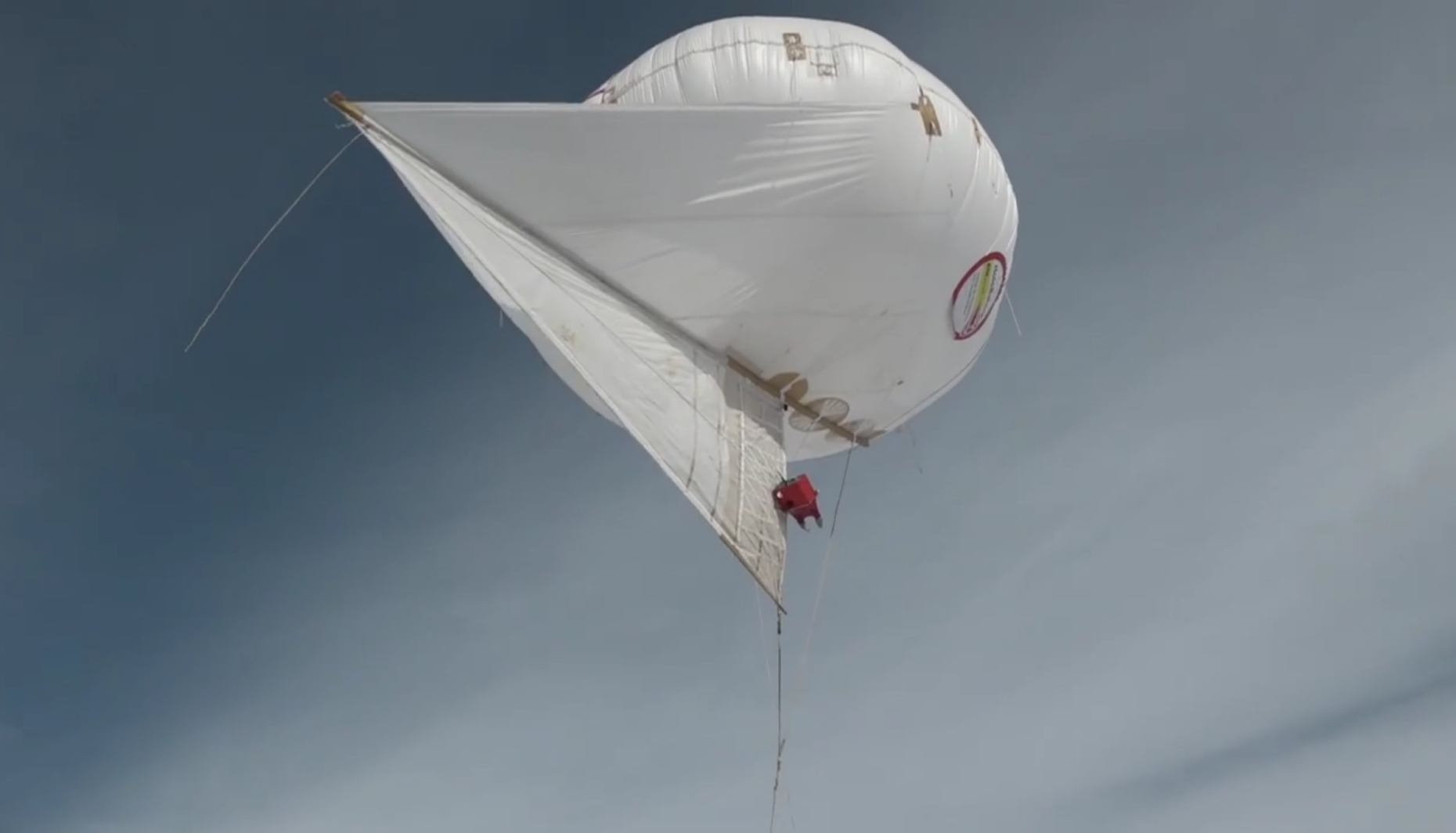Measuring campaign on the Wolfgang Pass
D-USYS
It has a diameter of eight meters and can climb up to 800 meters: Researchers from the Institute for Atmosphere and Climate (IAC) at ETH Zurich, WSL and MeteoSwiss are using a captive balloon system to explore the formation and growth of ice crystals and droplets in clouds. Last Tuesday, they launched the balloon at the Wolfgang Pass in Davos.

The captive balloon system is packed with instruments to analyse physical processes inside clouds, as the WSL Institute for Snow and Avalanche Research (SLF) reported. The aim is to better understand the formation and growth of ice crystals and droplets in clouds. For example, a holographic device will take pictures of individual precipitation particles. Using the images, researchers can then measure the size distribution of the particles and determine whether they are ice particles or liquid droplets.
The balloon is part of a major measurement campaign involving SLF, ETH, MeteoSwiss, EPFL, the University of Basel and the Leibniz Institute for Tropospheric Research (Tropos) in Leipzig, Germany. At the Wolfgangpass, on the Weissfluhjoch and on the roof of a Gotschna cable car cabin, the participating researchers are installing additional equipment to measure the clouds. The measurements are also to be linked with data on snow deposition in the terrain.
In the media
- external page Am Wolfgangplatz in Davos liessen Forscher einen Ballon bestückt mit Messgeräten in den Himmel steigen:
Radio SRF 1, Regionaljournal Graubünden 12.02.2019, starting from minute 10:20 - external page Schweizer Meteorologen wissen zu wenig über Schnee – weshalb ausgerechnet dieser Ballon helfen soll: aargauerzeitung.ch, 13.02.2019
- external page Fesselballon soll Prozesse im Inneren von Wolken vermessen: blick.ch, 12.02.2019
- external page Geheimnisvolle Wolken: Wie entstehen Schneekristalle?: MDR.de, 14.02.2019